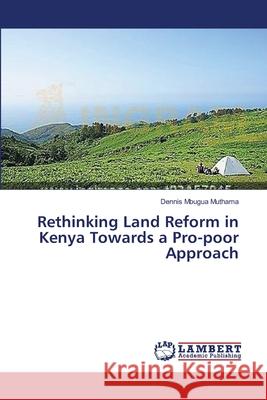Rethinking Land Reform in Kenya Towards a Pro-poor Approach » książka
Rethinking Land Reform in Kenya Towards a Pro-poor Approach
ISBN-13: 9783659395710 / Angielski / Miękka / 2013 / 92 str.
Pervasive land inequality in Kenya characterized by the unequal and badly skewed land distribution, coupled with other factors has made land not only one of the most defining political and development issue, but also the most emotive. Attempts to resolve the land question in Kenya have mainly focused on the market attribute of land at the peril of all the other attributes such as social justice. There has been little attempts to elucidate the land question from a pro-poor angle in Kenya. It is this gap that this book aims at filling. This book makes a case for the adoption of the state-society land reform perspective and its 4-pillar analysis framework in Kenya's future land redistribution reforms. Using the Coast region of Kenya as a case study the book argues that the region's poor rural socio-economic development has been mainly as a result of its unresolved land question and current land distribution inequalities. The book therefore introduces a new way through which the land question in Kenya can be viewed. This book will be an additional resource to land reform practitioners, and students of land reform, in Sub-Saharan Africa.
Pervasive land inequality in Kenya characterized by the unequal and badly skewed land distribution, coupled with other factors has made land not only one of the most defining political and development issue, but also the most emotive. Attempts to resolve the land question in Kenya have mainly focused on the market attribute of land at the peril of all the other attributes such as social justice. There has been little attempts to elucidate the land question from a pro-poor angle in Kenya. It is this gap that this book aims at filling. This book makes a case for the adoption of the state-society land reform perspective and its 4-pillar analysis framework in Kenyas future land redistribution reforms. Using the Coast region of Kenya as a case study the book argues that the regions poor rural socio-economic development has been mainly as a result of its unresolved land question and current land distribution inequalities. The book therefore introduces a new way through which the land question in Kenya can be viewed. This book will be an additional resource to land reform practitioners, and students of land reform, in Sub-Saharan Africa.











